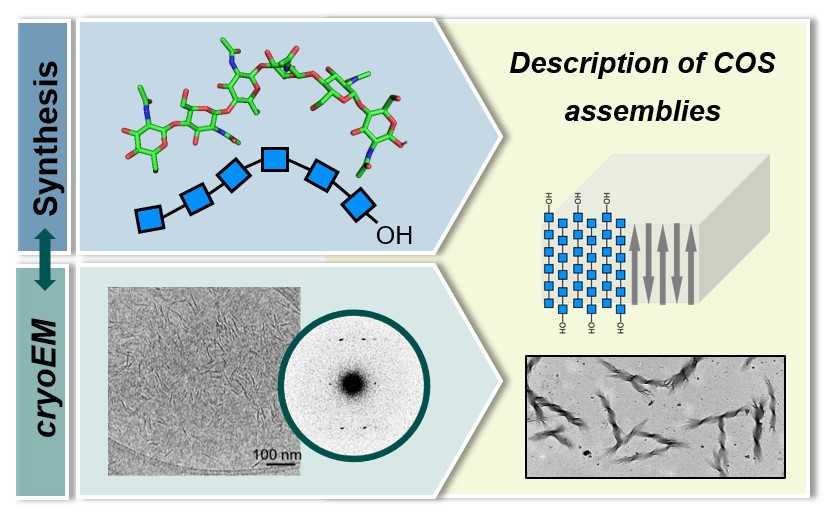______________
From synthetic chitin oligomers to well-defined chitin-based materials

About the Project
To break the Codec and investigate chitooligosaccharides (COS) structure-function relationships, it is essential to start from well-defined samples. In this project, we will prepare 1) synthetic COS with well-defined chemical composition, and 2) nanomaterials made by assembling these synthetic COS. By following a synthetic approach, we can precisely control the chemical composition of the COS structures we want to study. Moreover, we can insert chemical modifications to better analyse how COS interact with proteins. Similarly, by using synthetic COS to build nanomaterials, we can gain insights into the chemical principles behind chitin assembly and how chitin materials interact with proteins.These samples will be distributed as standards to the consortium to support their efforts to understand how Codec influences various aspects of biology and materials science.
This project brings together the expertise of two research groups: the Delbianco group at the Max Planck Institute of Colloids and Interfaces (MPI-CI), and the Ogawa group at the Centre de recherches sur les macromolécules végétales (CERMAV). The Delbianco group will use automated glycan assembly (AGA) to create well-defined COS with adjustable length, acetylation patterns, and modifications. Meanwhile, the Ogawa group will employ cryoEM to study the nanomaterials formed from these COS. By taking a bottom-up approach, we aim to uncover how the molecular composition of individual COS molecules affects the behavior of the assembled materials, including their aggregation, chirality, and interactions with proteins. This knowledge will enhance our understanding of chitin and provide important guidelines for creating precise chitin-based materials.



